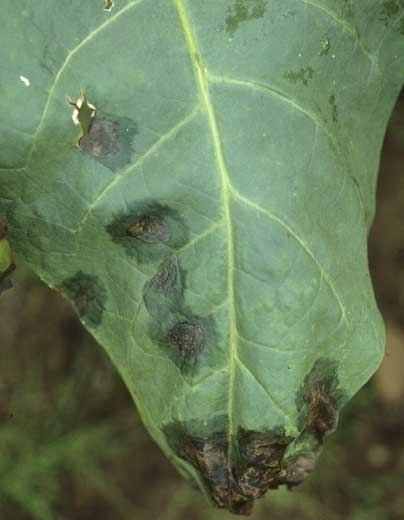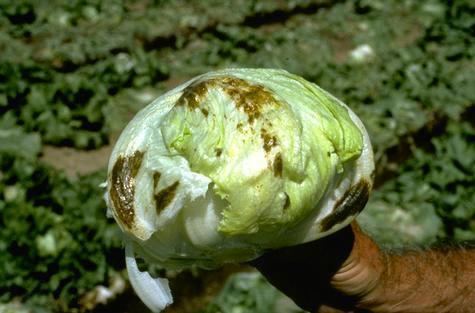Rank Species | Genus Pseudomonas Phylum Proteobacteria | |
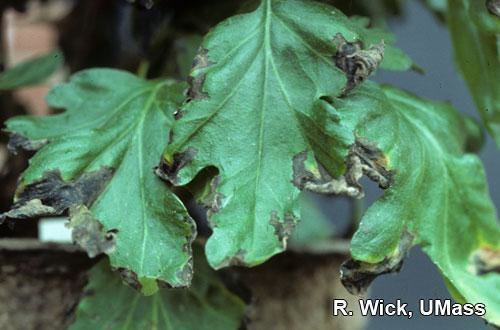 | ||
Similar Pseudomonas, Pseudomonas viridiflava, Pseudomonas marginalis, Pseudomonas corrugata, Pseudomonas syringae | ||
Marulda parlak leke hastal pseudomonas cichorii
Pseudomonas cichorii is a Gram-negative soil Bacterium that is pathogenic to plants. It has a wide host range, and can have an important economical impact on lettuce, celery and chrysanthemum crops. P. cichorii was first isolated on endives (Cichorium endivia), from which it derives its name. It produces 6-aminopenicillanic acid. Based on 16S rRNA analysis, P. cichorii has been placed in the P. syringae group.
Contents
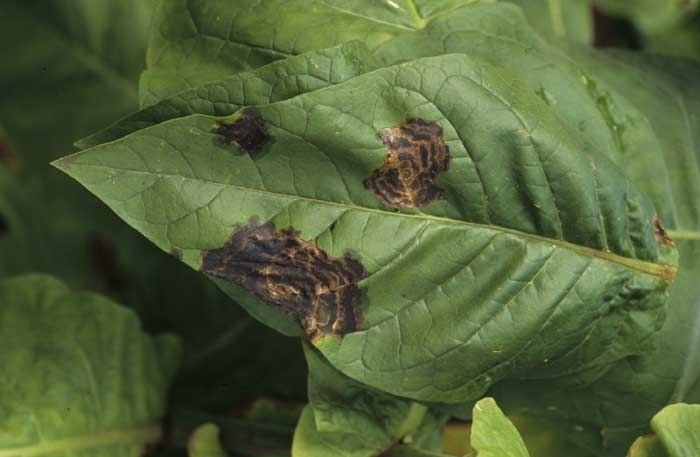
Hosts & Symptoms
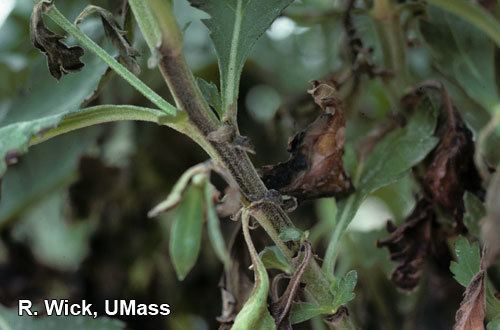
Pseudomonas cichorii is non-host specific as it does not infect just one host. Its host range includes lettuce, pepper, celery, coffee, wheat, basil and several other host plants. Symptoms of the causal agent vary depending on the host and the area of the plant infected. In general, pseudomonas cichorii is seen to cause leaf blighting and spotting. The first appearance of symptoms involves a water soaked lesion that develops at the edge of the leaf, midvein or randomly across the leaf These lesions progressively turn black or brown and may be surrounded by yellow halos. These lesions also often “coalesce and progress to severe leaf blight under favorable conditions for the bacterium.” When the infected leaves become dry, the spots often look brittle and crack.
Environment
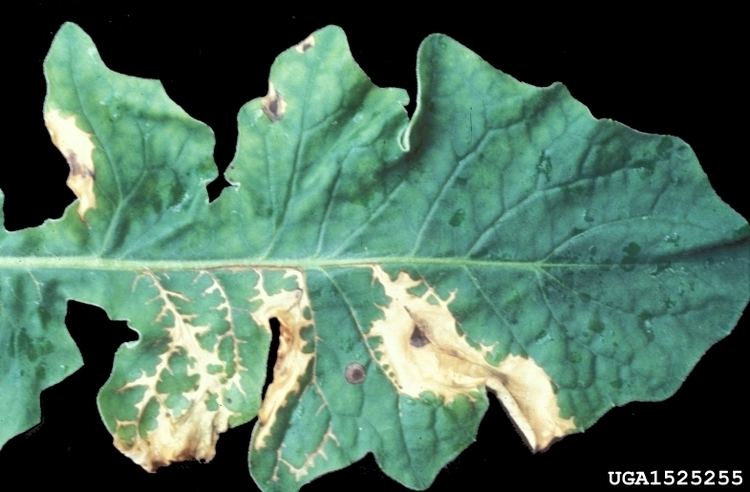
Pseudomonas cichorii grows in warm, wet and humid areas. It spreads by wind driven rain and survives and infects on wet leaf surfaces. The pathogen is often spread during sprinkler watering and overhead irrigation systems. Plants growing outside exposed to rain exhibit dark brown to black spots on their leaf surface. When the plants are exposed to a limited amount of water and moisture, they exhibit sunken in lesions on both the upper and lower leaf surface. These different spots and lesion types often aid in the identification of P. cichorii. Free moisture on the leaves are known to promote disease development and plant infection.
Management
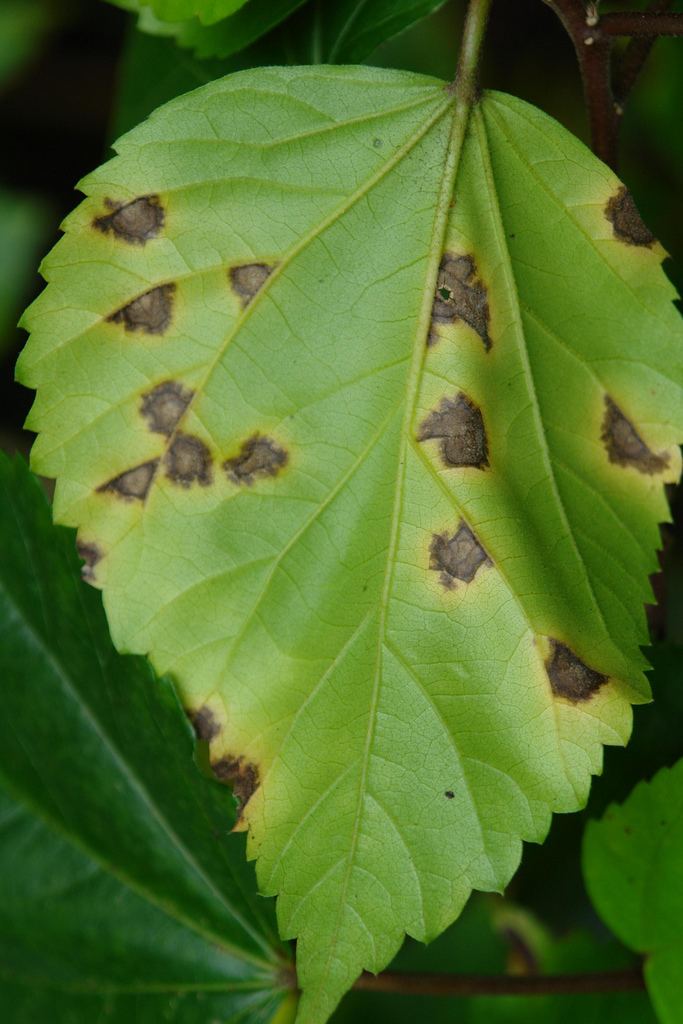
To best prevent the spread of pseudomonas cichorii the first intervention is to regulate the free water and watering system of leaves. Overhead sprinklers and hose watering should be replaced with soil irrigation. Soil irrigation is useful because it prevents excess water accumulation on plant surfaces by watering the plant from the root system. Soil irrigation also limits the ability of the seed structures to grow and infect leaf surfaces. A second intervention is watering earlier in the day. Watering earlier in the day gives the leaves more time during the day to dry. A third intervention, is to minimize leaf splashing. This lessens the chance that the infected water will spread to another host. Sanitation is also important. Workers and those handling the infected leaves should wash their hands and keep infected plant material from uninfected areas. These infected cuttings and seedlings should not be planted or kept near uninfected fields as the pathogen is able to survive on the host's seeds. Chemical control with appropriately labeled copper or other bactericidal products can be used to help manage the disease but is not always successful in preventing disease spread when conditions are wet.
